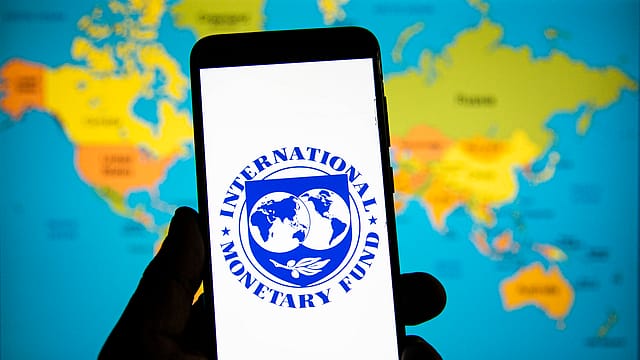India, China to contribute over half of global growth in 2023: IMF
ADVERTISEMENT

China and India alone are expected to contribute more than half of global growth this year, with the rest of Asia contributing an additional quarter, the global financial body IMF (International Monetary Fund) said in its latest report. The IMF data shows China, India, and the rest of Asia propelling a larger share of global economic growth. Economists are especially bullish on China since a sudden re-opening has paved the way for a faster-than-expected rebound in activity.
"China has strong trade and tourism linkages, so this is positive news for Asia, as half of the region’s trade takes place between its economies," IMF says. The international financial agency says its analysis in the latest Regional Economic Outlook for Asia and the Pacific shows that for every percentage point of higher growth in China, output in the rest of Asia rises by around 0.3%.
The IMF in its report earlier had said the Indian economic growth will slow down to 6.1% during the calendar year 2023 as compared to 6.8% in 2022 before picking up to 6.8% in 2024. The slowing economic growth in 2023 is attributed to a weaker-than-expected recovery, subdued external demand, and tightening monetary and financial conditions. The IMF, however, changed India's growth forecast for 2024 upward to 6.8% from 6.1% in its October outlook.
January 2026
Netflix, which has been in India for a decade, has successfully struck a balance between high-class premium content and pricing that attracts a range of customers. Find out how the U.S. streaming giant evolved in India, plus an exclusive interview with CEO Ted Sarandos. Also read about the Best Investments for 2026, and how rising growth and easing inflation will come in handy for finance minister Nirmala Sitharaman as she prepares Budget 2026.
The IMF, however, says the strong performance of manufacturing exports has also started to cool under the weight of slowing global trading partners. For Korea, Singapore, and Taiwan Province of China, the technology cycle—visible in the sagging price of microchips—is a drag on exports that’s likely to last through year-end, it says, adding that with growth thought to be bottoming out in the rest of the world, external demand should firm heading into next year, says the IMF.
The international body says the short-term outlook has brightened but important longer-term challenges remain. "Another important revision to the outlook for China is our downgrade of its medium-term prospects. Just like the near-term acceleration in growth in China is expected to generate positive spillovers, the slowdown in coming years will weigh on growth prospects across Asia’s highly integrated supply chains and around the world."
On inflation, the IMF says Asia’s inflation—which rose worryingly above central bank targets last year—is poised to moderate. "There are now encouraging signs that headline inflation peaked during the second half of last year, though core inflation is proving more persistent and has yet to ease definitively." Notably, India’s retail inflation jumped to 6.52% in January 2023 from 5.72% in December 2022, breaching the RBI’s upper tolerance limit of 6%.
Inflation is expected to return to central bank targets "sometime next year" amid an easing of financial and commodity headwinds, IMF forecasts suggest. On easing currency prices, the IMF says global financial conditions have eased somewhat, and with them, the US dollar has lost some strength. "Central banks in Asia have been hiking interest rates as they tackle above-target inflation. These factors have helped Asian currencies rebound, with most erasing about half of last year’s losses, which has eased pressure on domestic prices."
According to the RBI, the country’s retail inflation for FY2022-23 is projected at 6.5%, whereas for FY23-24 it is expected to stay within the RBI’s upper tolerance band at 5.3%, with Q1 at 5%, Q2 at 5.4%, Q3 at 5.4%, and Q4 at 5.6%.
The IMF, meanwhile, has suggested subtle policy trade-offs between "controlling inflation and ensuring financial stability", and a need to strengthen resolution frameworks. "Many Asian countries face elevated financial vulnerabilities, with high leverage across household and corporate sectors, and significant bank exposure to real estate downturns."
